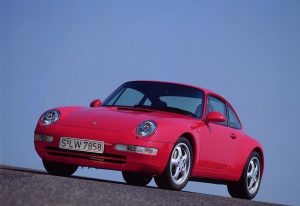Recalls: Porsche 993 911 Coupe
Overview
Manufacturers, or importers, issue recalls for defects or faults which have the potential to cause injury. Generally, manufacturers will inform the original buyers if their vehicle is subject to a recall and of the steps required to remedy the defect or fault. Please note that the recalls below (if any) are for Australian-delivered vehicles only. Furthermore, the number of recalls should not be taken as an indication of a model’s reliability or its safety more generally.
Recalls: Porsche 993 911 Coupe
- In July 1994, a recall was issued for Porsche 911 Carrera models due to an error in the casting process which could result in the cracking of notches – at the mould parting line – of the rear suspension subframe; this could affect the handling of the vehicle (PRA 1994/2217).
- In July 1994, a recall was issued for 1994 Porsche 911 Carrera models as it was not certain that all vehicles were equipped with child seat mounts (PRA 1994/2218).
- In December 1995, a recall was issued for 1996 911 Carrera models due to the cover sleeve on the exhaust tailpipe having been fixed with only two – instead of four – welding spots (PRA 1996/2680).
- In May 1996, a recall was issued for 1996 model year Porsche 911 Turbos. In these vehicles, the cable for the oxygen sensor – after the catalytic converter in the DME control unit connector – was incorrectly installed; this could result in worsening vehicle emissions (PRA 1996/2814).
- In March 1999, a recall was issued for 1996 Porsche 911 Carrera, Carrera 4, Carrera 4S and Turbo models. In these vehicles, voltage peaks caused by different items of electrical equipment – such as the horn relay – could accidentally trigger the driver’s airbag (PRA 1999/3861).
Problems and faults: Porsche 993 911 Coupe
Overview
This section identifies potential problems, causes and fixes based on the experiences of owners and repairers, online sources and technical service bulletins. This information is provided solely for reference purposes and AustralianCar.Reviews recommends that only properly qualified persons carry out repairs or modifications. Furthermore, the number of items below should not be taken as an indicator of a model’s reliability or the frequency with which they may occur.
To report a problem or fault to the AustralianCar.Reviews team, please use the Contact Us form. Note that AustralianCar.Reviews does not offer advice on automotive problems or disputes; such enquiries will not receive a reply. For vehicles purchased from dealers after 1 January 2011, please see our Australian Consumer Law fact sheet.
Porsche 993 911 Engines
- Cam cover oil leak: Over time, the plastic cam covers can warp or crack due to the heat from the exhaust system. The cam covers may then start weeping oil, usually onto the exhaust manifold. Symptoms of leaking oil include an oil smell after the vehicle has stopped; sometimes this can be smelt from within the cabin.
- Secondary air injection clogged: The secondary air injection ports can become clogged and caused the ‘check engine’ light to illuminate. To fix, the ports must be cleaned. The root cause of the clogging is understood to be oil seepage through the valve guides. When the valve guides wear, oil burning causes carbon to flow into the cam towers. To prevent a recurrence of this problem, it is recommended that the valve guides be replaced.
- Petrol odours: Petrol odours may be due to a hole in the filler-pipe neck or hose connections.
993 911 Carrera RS
- Cam timing: Since the camshaft drive wheel is not keyed onto the camshaft it can slip and alter the cam timing – the main symptom is a slight reduction in power output.
- Valve retainers: For engines subject to hard use, the valve retainers can break and cause the valves to contact the pistons, resulting in serious damage. For track use, some owners have replaced the standard valve retainers with upgraded titanium retainers.
- Cylinder liners: There have been reports of a batch of vehicles where the cylinder liners do not conform to specifications, enabling compression blow-by at high engine speeds. Symptoms include serious oil leaks due to the crankcase getting pressurised and significant power loss at high engine speeds. To fix, the engine must be rebuilt with cylinder liners that meet specifications.
Other problems and faults: Porsche 993 911 Coupe
- Vibrating or squeaking windscreen: For the first few years of production, the Porsche 993 911 was susceptible to a vibrating or squeaking windscreen due to the glass moving within its rubber trim. To fix, a rubber chord (Part #996 541 903 00) should be inserted between the rubber trim to fill the space in the windshield and alleviate the squeak. However, owners frequently put Teflon tape between the frame and seal, or Vaseline under the outside seal.
- Steering column noise: Noise from the steering column when turning may be due to a defective ball bearing in the steering tube.
- Front suspension noise: Creaking or grinding noises from the front suspension may be fixed by fitting revised rubber stabiliser-bar mounts.
- Alternator belt: If the alternator belt makes a squealing noise, both the belt and pulley should be replaced.




